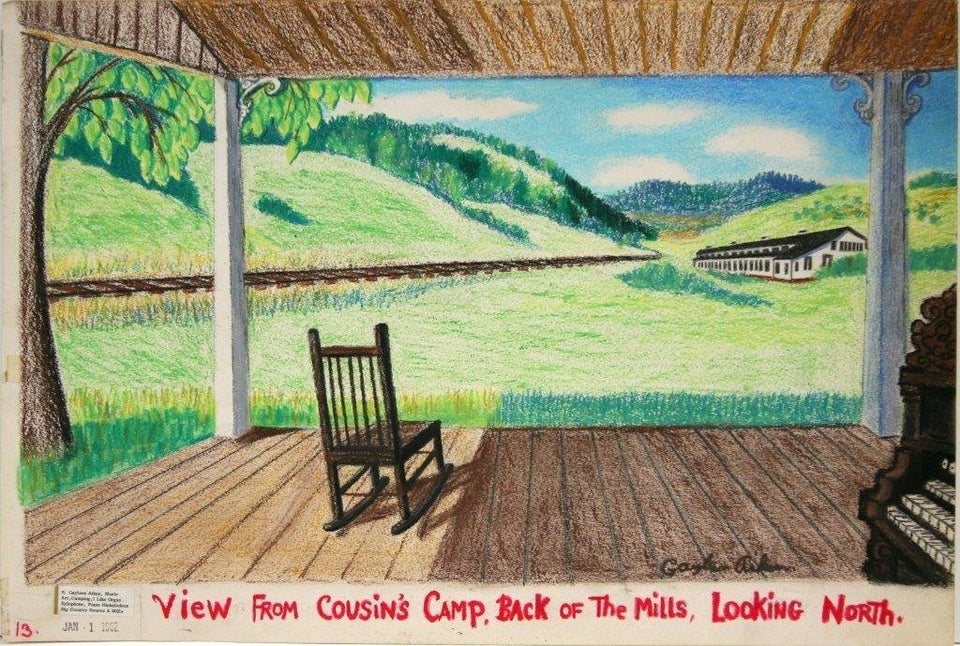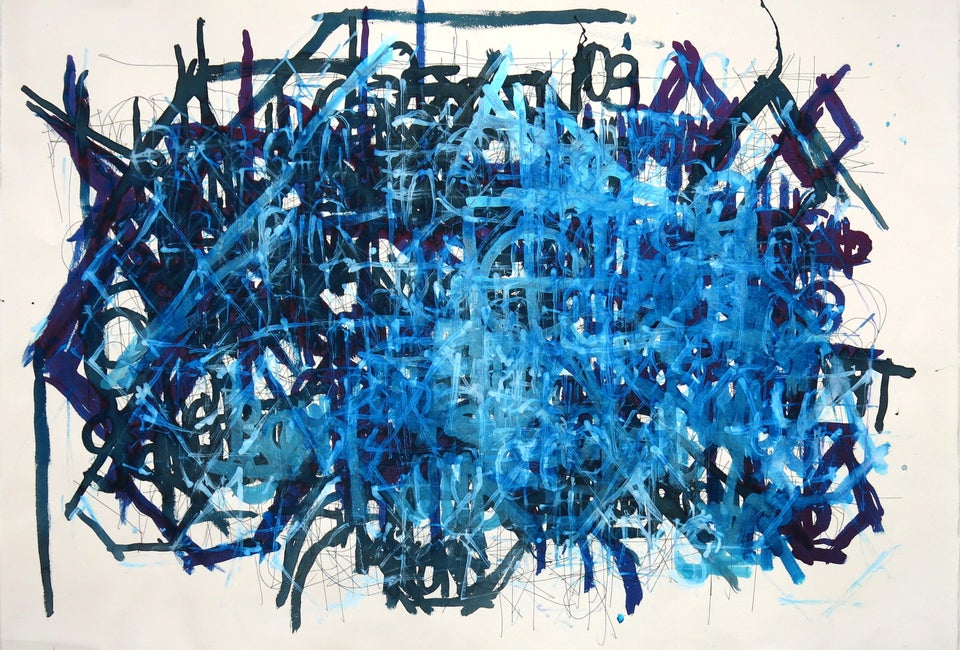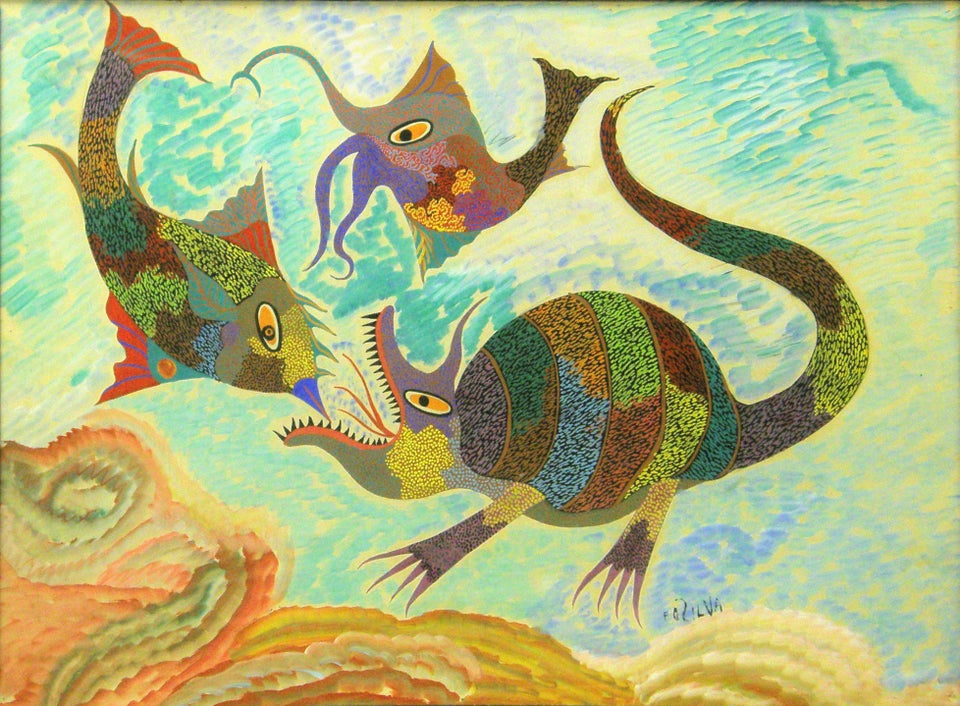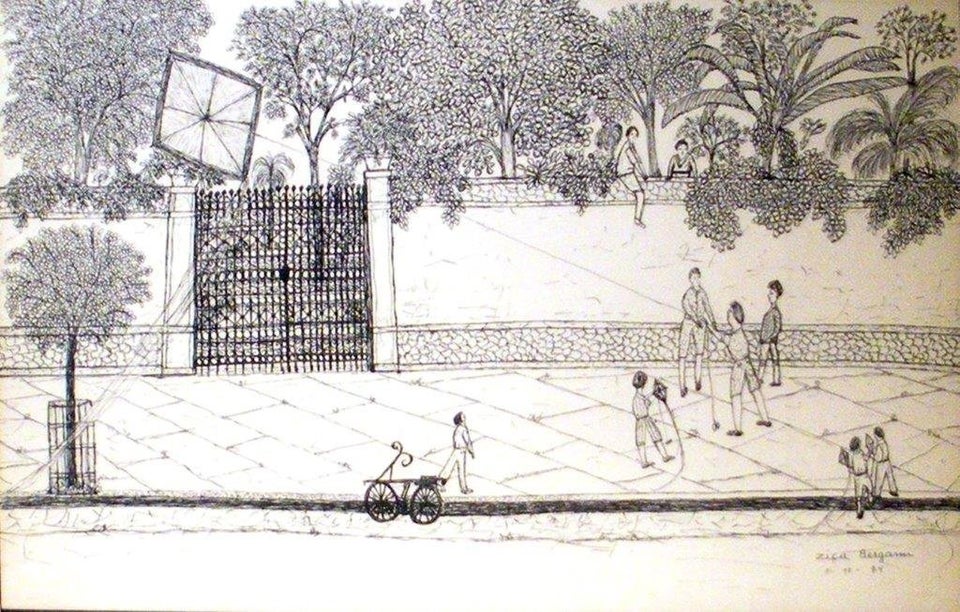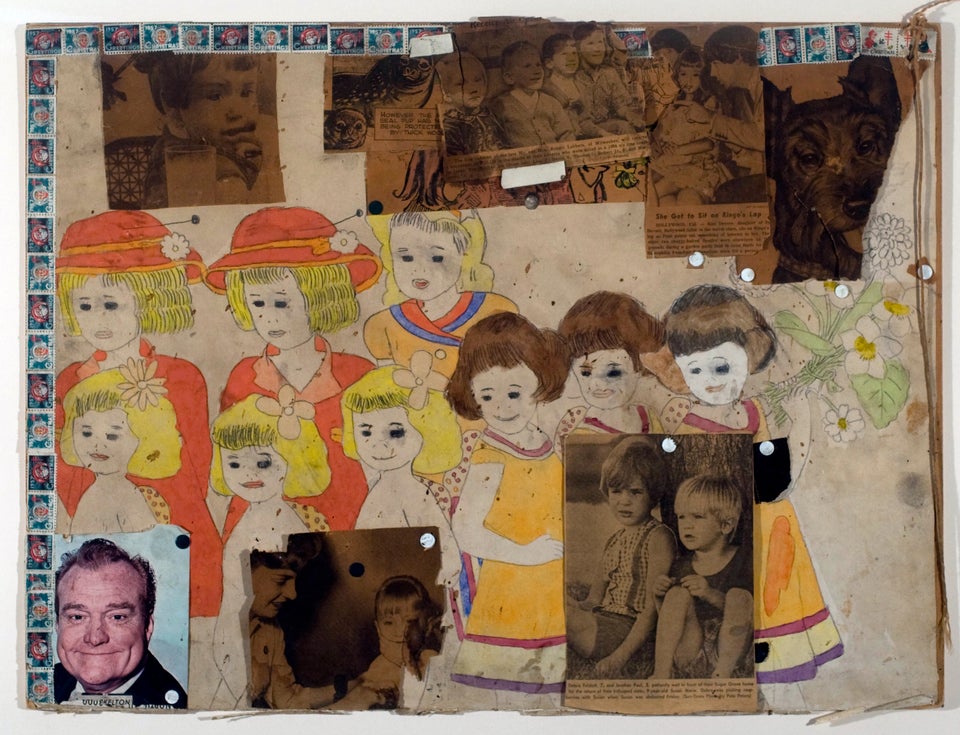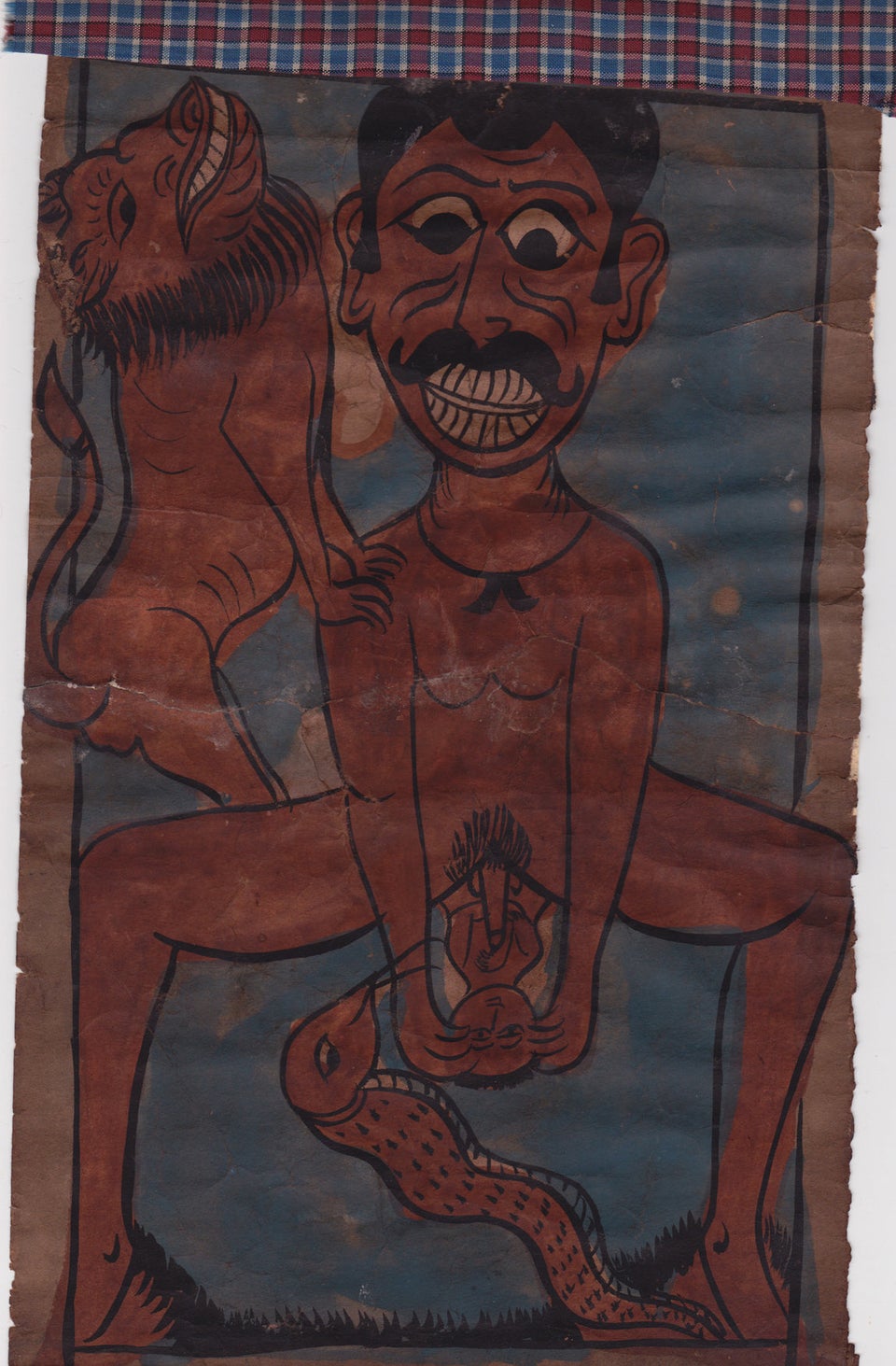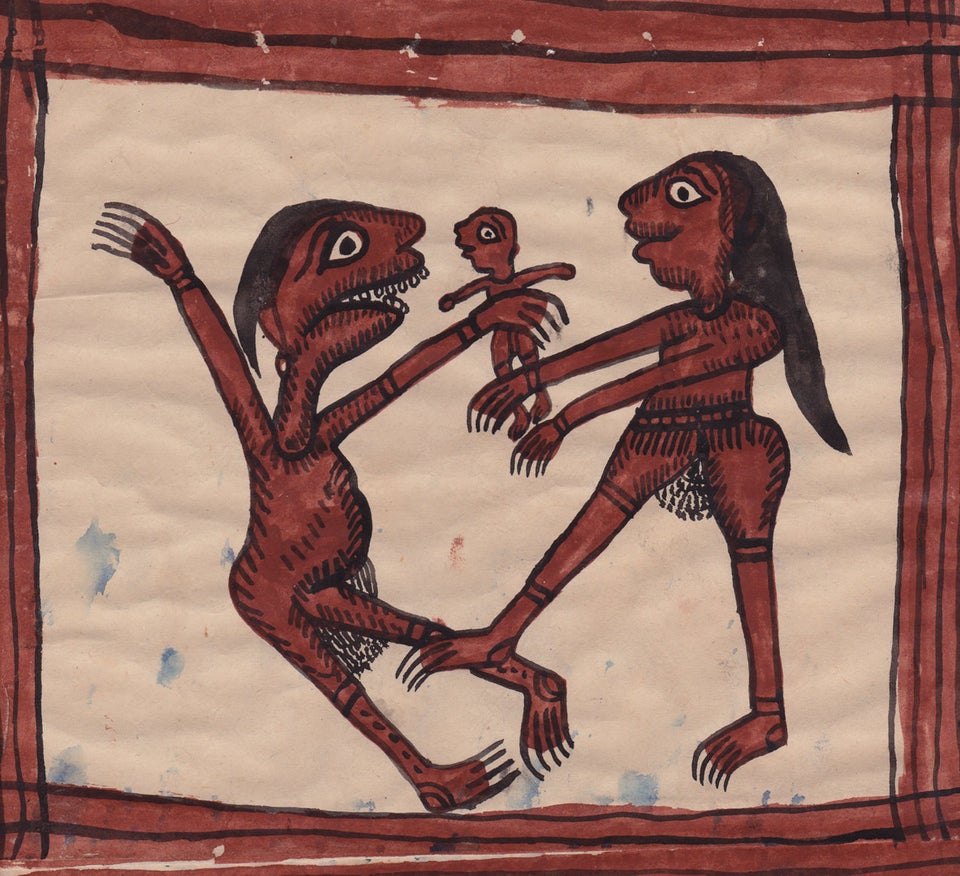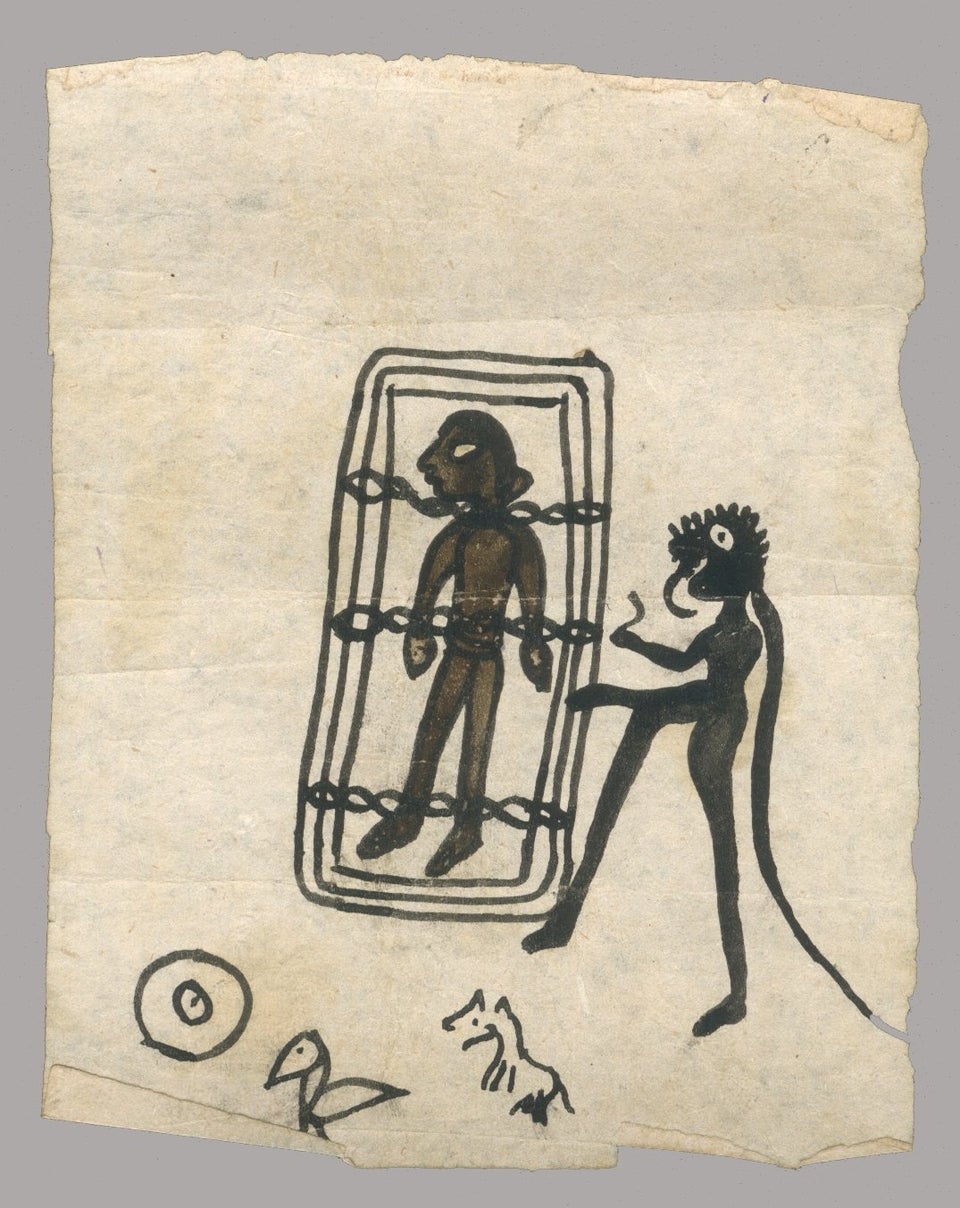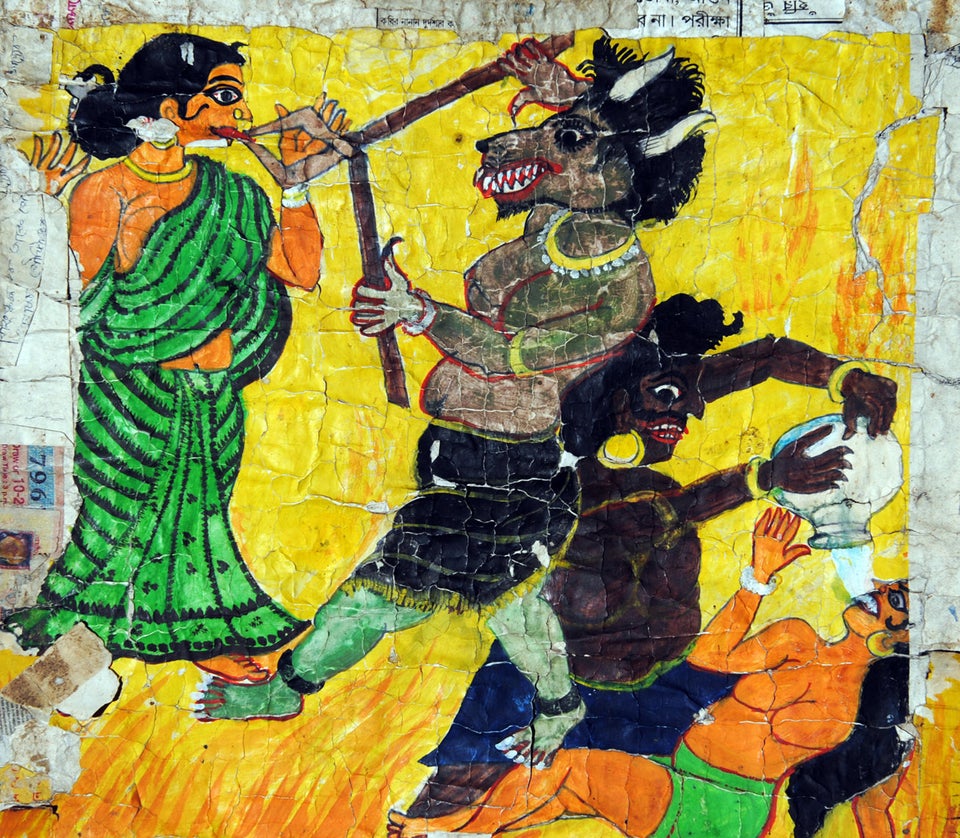Susan Te Kahurangi King's story sounds like something out of folklore. The artist, born in 1951 in Te Aroha, a New Zealand farming town, stopped speaking around the age of four for no apparent reason. From then on, she communicated solely through her art.
King's drawings, made from pen, graphite, colored pencil, crayon, and ink, conjure entire netted worlds that seem to have little in common with artistic norms past or present. Rather, the obsessively rendered images look like the result of watching cartoons while slipping off into a dream state, with chopped and screwed characters floating around axes you didn't know existed.

Susan Te Kahurangi King Untitled, c. 1965 Graphite and colored pencil on paper 11 x 9 inches (27.9 x 22.9 cm)
King's work is now on view at Andrew Edlin Gallery in New York for her first U.S. solo exhibition, titled "Drawings from Many Worlds." The show is a large leap for the artist who, although famed in her hometown, still has little recognition in the United States.
"I was introduced to her work by Gary Panter a little over a year ago," exhibition curator Chris Byrne explained to The Huffington Post Arts. "He had known about it just from seeing it online and said it was really amazing. Even on Facebook, I couldn't believe what I was looking at. So I contacted the family."
King grew up in a family with 12 siblings, all of whom have been immensely supportive of her artwork throughout her life. Their roles as caretakers increased when King ceased speaking at such a young age. "It wasn't like one day she stopped," explained Byrne, "but I think between the ages of four and six she stopped communicating that way. In terms of how close she is to the family and how well they're able to read her, it doesn't feel unusual. It's the way she's lived and they accept her that way."
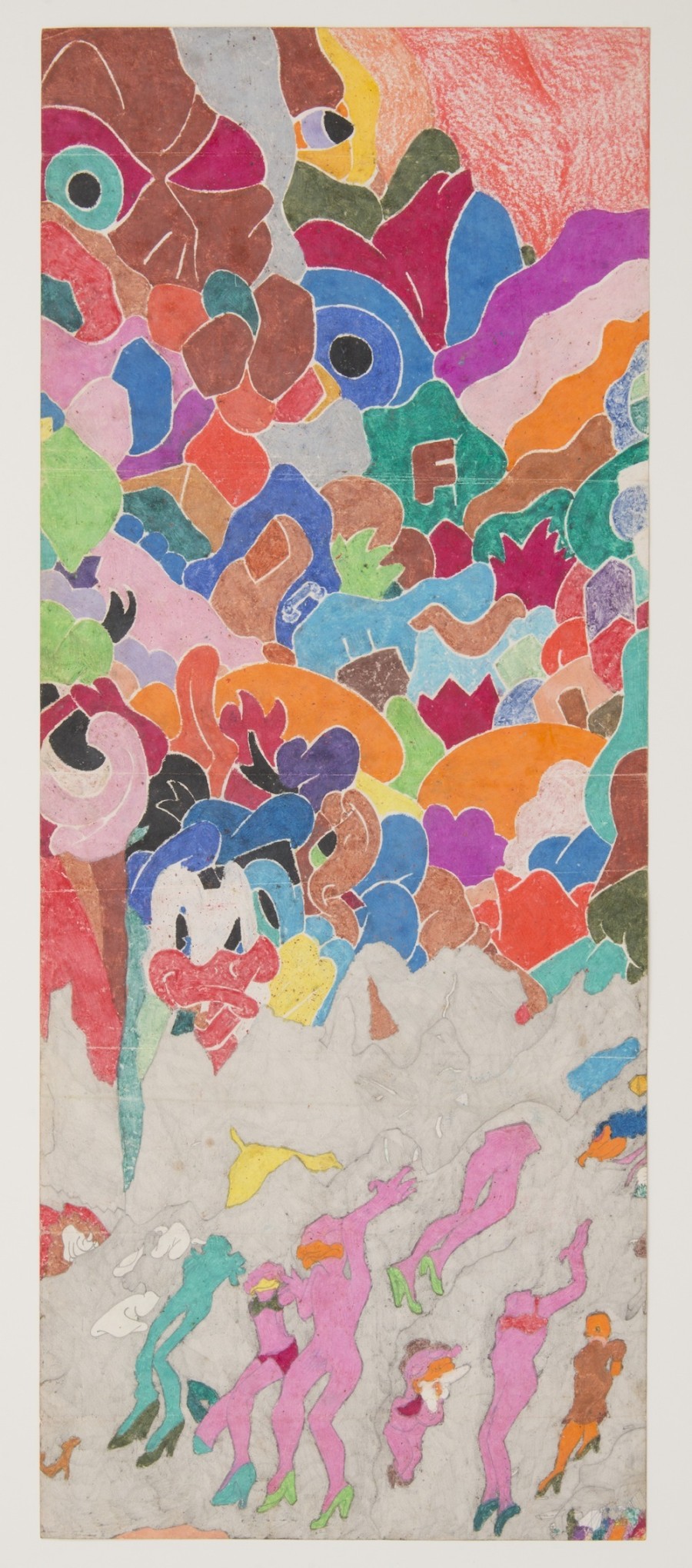
Susan Te Kahurangi King Untitled, c. 1978 Graphite and crayon on paper 23 x 9.25 inches (58.4 x 23.5 cm)
"When people saw her work, even when she was young, she was considered a kind of prodigy," he added. "I think that through her family and friends, more people came in contact with her work. She's kind of a local celebrity in the Auckland area."
A 2012 New Zealand documentary titled "Pictures of Susan" goes deeper into King's upbringing and local reputation. At some point in the 1980s King stopped making art completely without explanation. Then, just as mysteriously, in 2008, she started again. "Work we're seeing her making today, they are like maps of a place that's not in our head at the moment," a family member explains in the film. "Rather than closing down, it's opening up."
King's work gained more attention after showing at the Outsider Art Fair in New York this May, where it received glowing reviews from New York Magazine critic Jerry Saltz. "Included are strange abstract combinations or knitted-together landscapes of cartoon parts, notably Donald Duck, arranged in ways that echo Willem de Kooning, Jim Nutt's meticulous piecing together of body parts and distortion, Roy Lichtenstein's stylized cartooning, and Carroll Dunham's deft space and line," he wrote. "Much of her work could hold a museum wall next to these artists’ work."
When Byrne first saw King's work, he was captivated immediately by something he had difficulty describing. "It's a hard thing to say, even saying something like 'the directness' seems very cliche. I would say, typical things that are attributed to self-taught artists, like obsessiveness or inventiveness. Her work seemed to develop in a different trajectory."
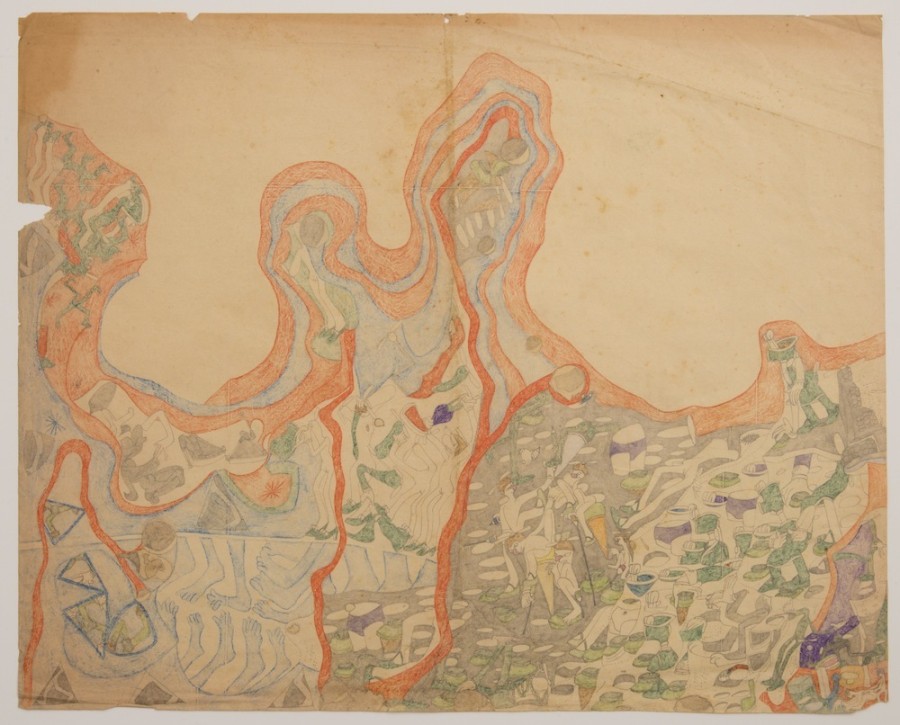
Susan Te Kahurangi King Untitled, c. 1978 Graphite, colored pencil and crayon on paper 16 x 19.5 inches (40.6 x 49.5 cm)
In his book "How to Look at Outsider Art," Lyle Rexer writes: "In its often fierce and narrow consistency, outsider art can confirm certain experiences that may be at the foundation of all art, and thus can enhance our generosity toward art in its many forms. It can teach us that art builds worlds; that is art's power. It is constitutive rather than denotative. Its power lies not in its ability to image some preexisting reality but to bring things into being, to reconstitute the world in acts unhinged from canonical forms and conventionalized rituals and ways of seeing."
Such a description nearly magnetizes to work like King's, work which exists gloriously apart from the contemporary art gracing most gallery walls today. While one can only speculate about King's motivations for making art, it is evident that she needs to create in a way that seems almost mythical today.
"She's very visually aware. Her sisters said even when she'd hold an animal, she'd get a sense of the anatomy of it. She's a great artist; she gets it. She gets what it means to be alive."
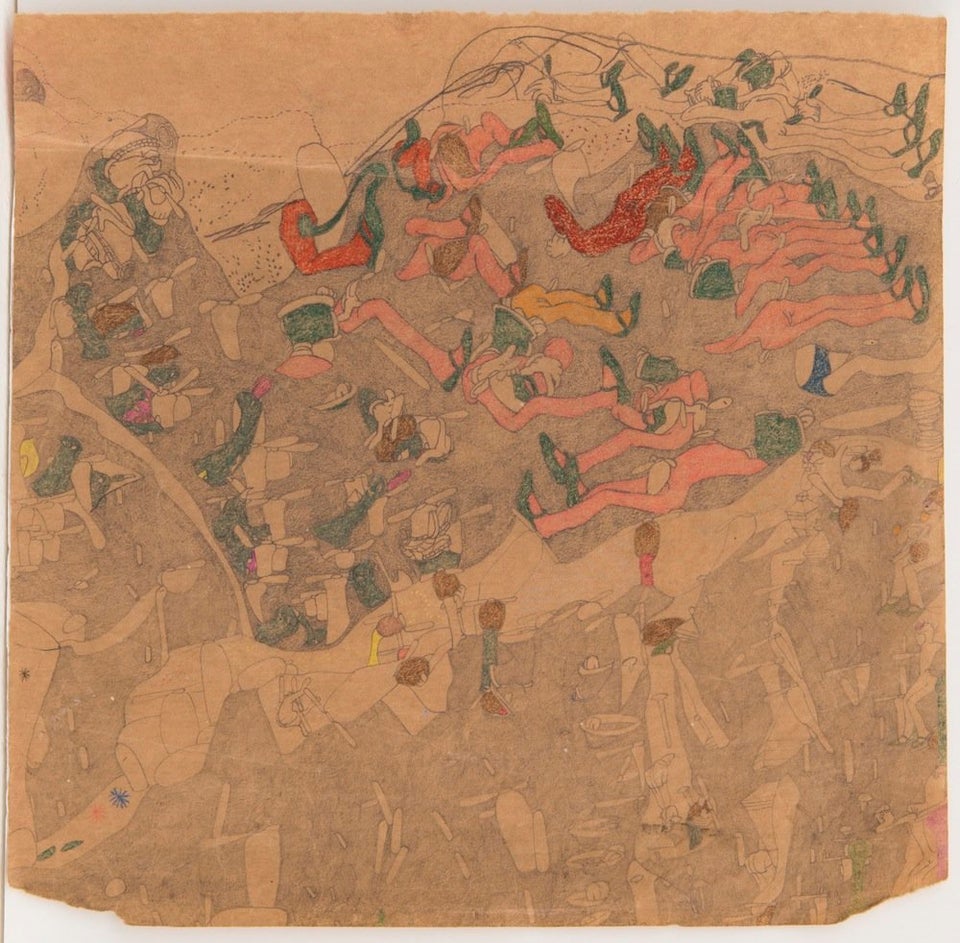
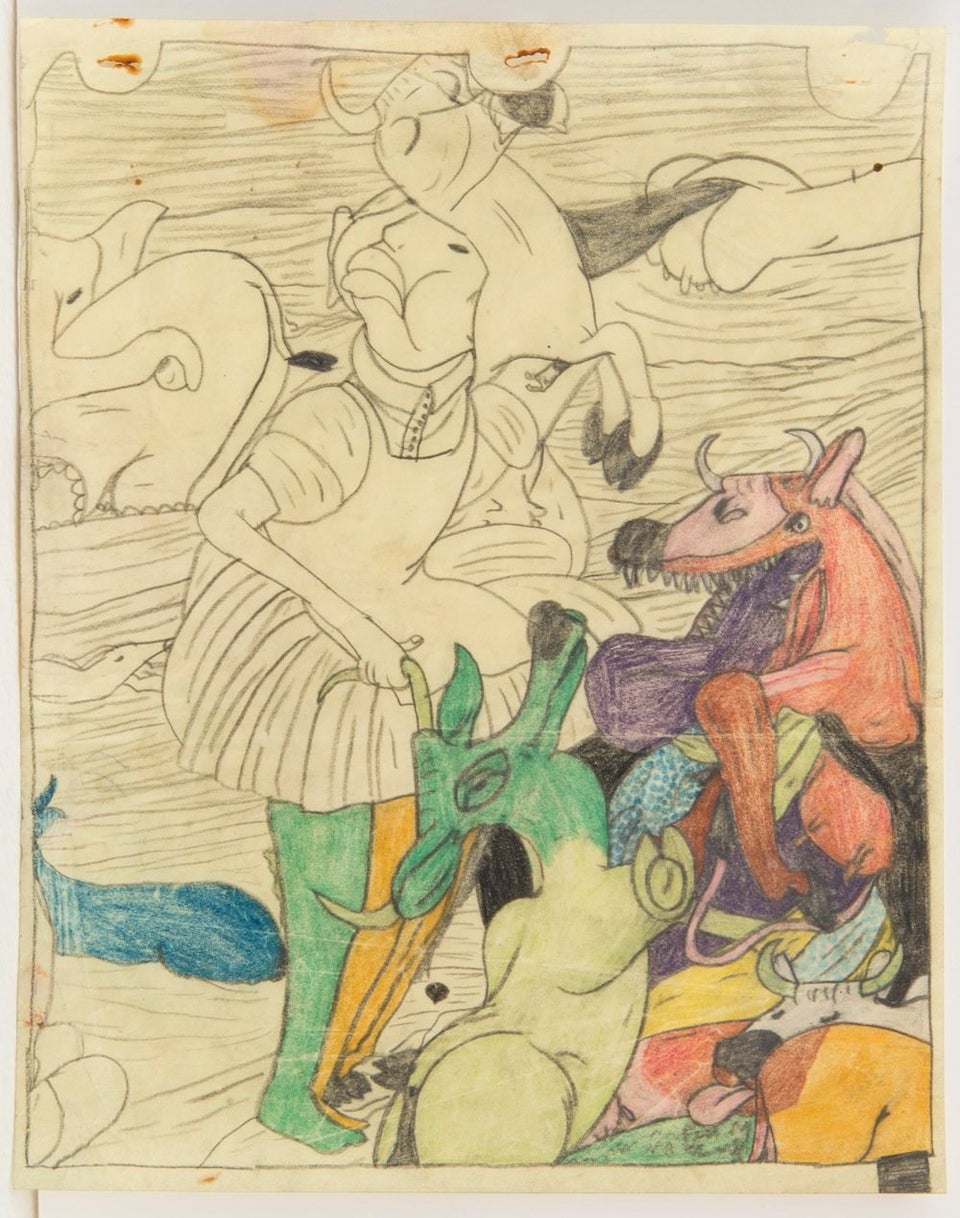
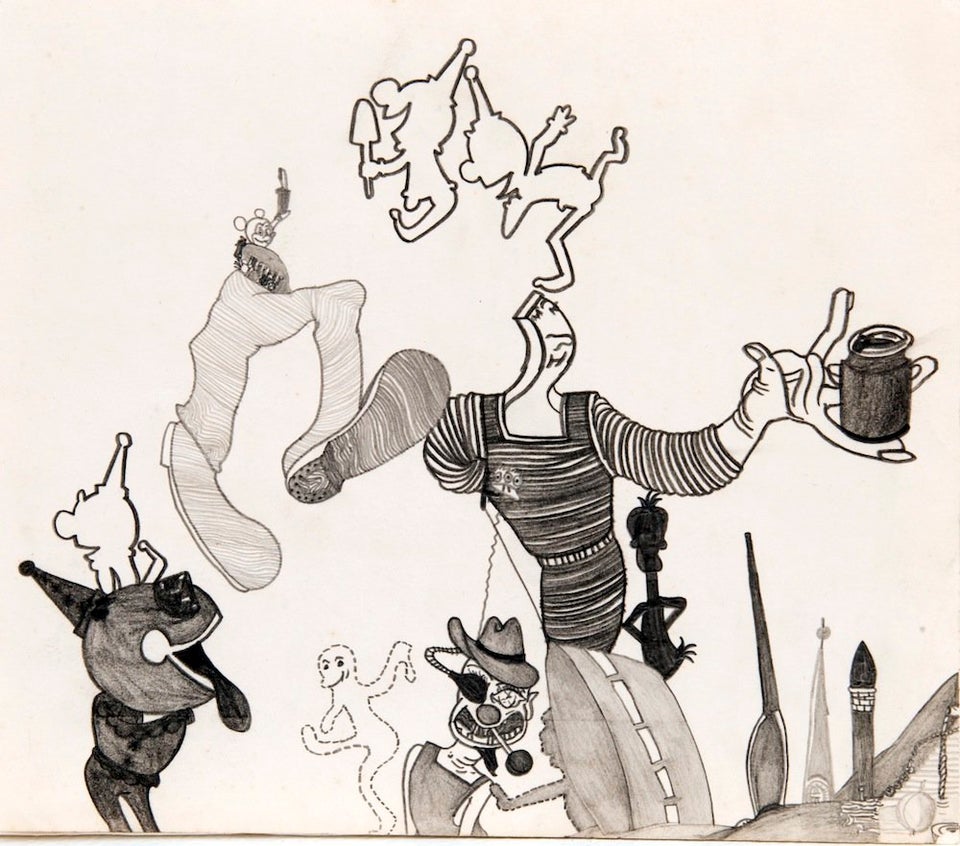
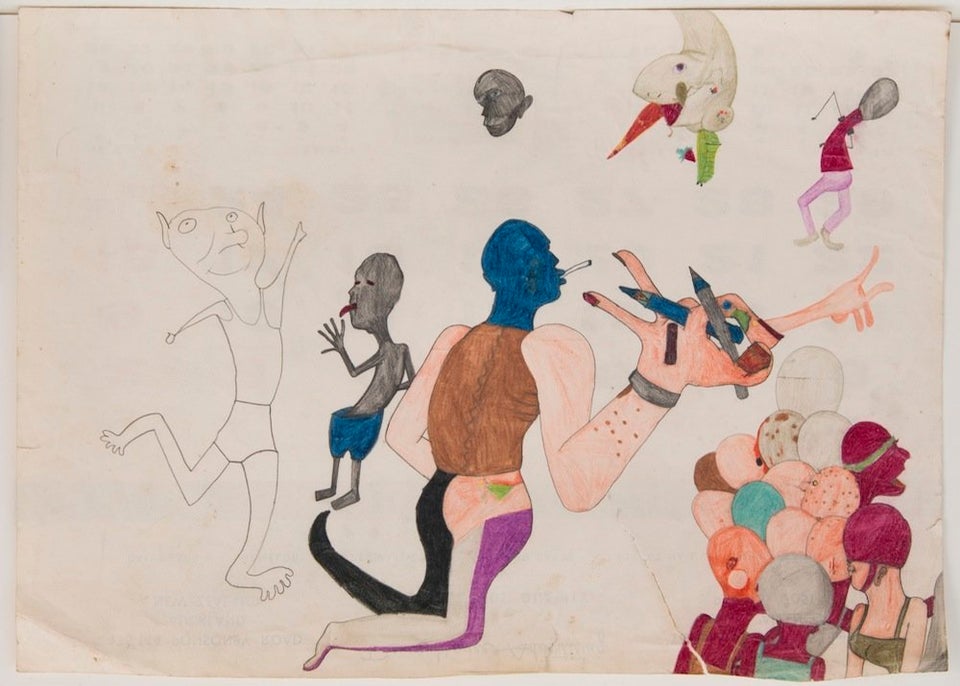
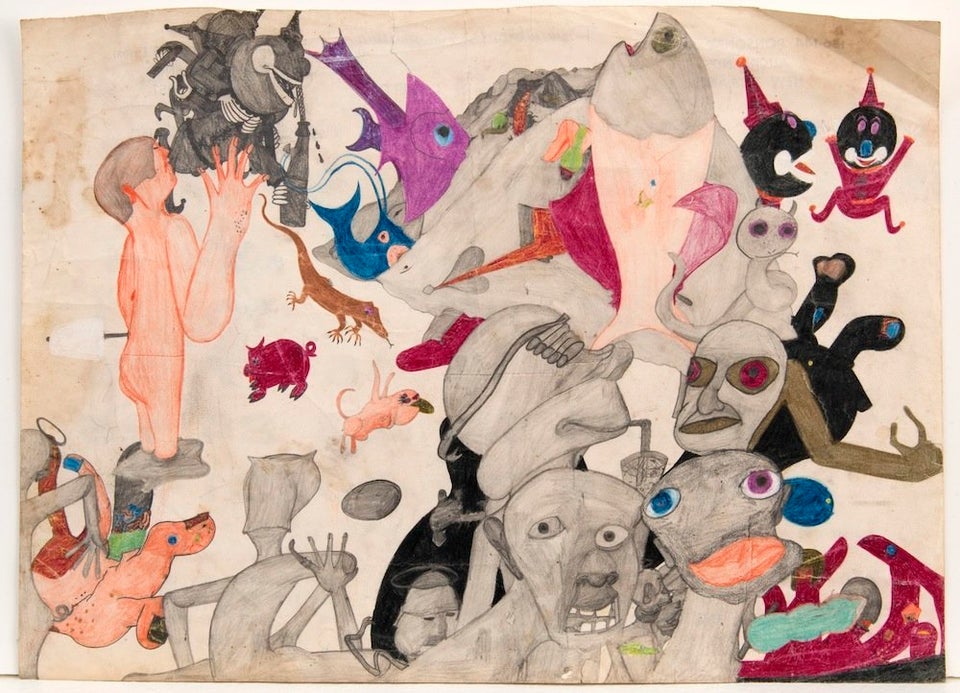
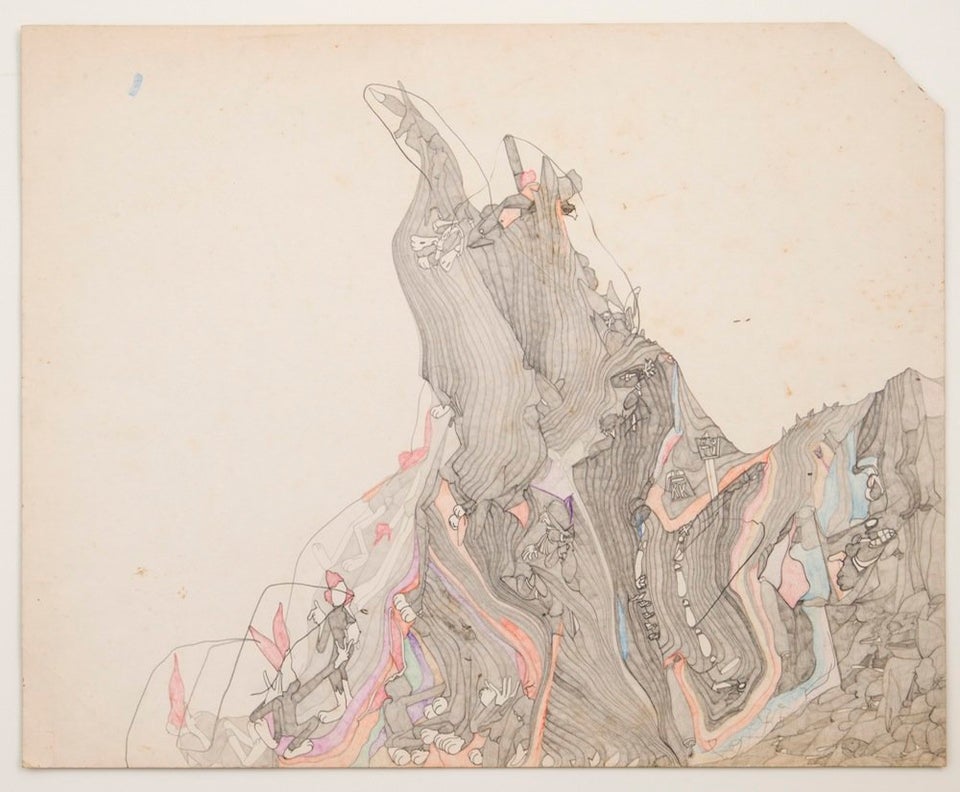
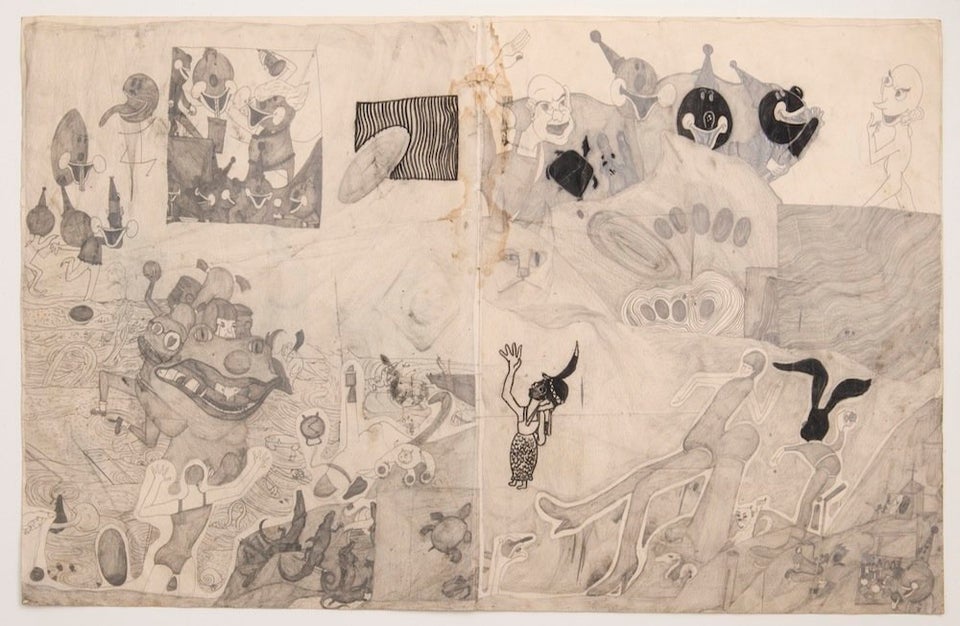
"Drawings from Many Worlds" is on view at Andrew Edlin Gallery until December 20, 2014.
Outside the Lines" is an ongoing series addressing the prickly genre sometimes referred to as outsider art.
Related
Before You Go
